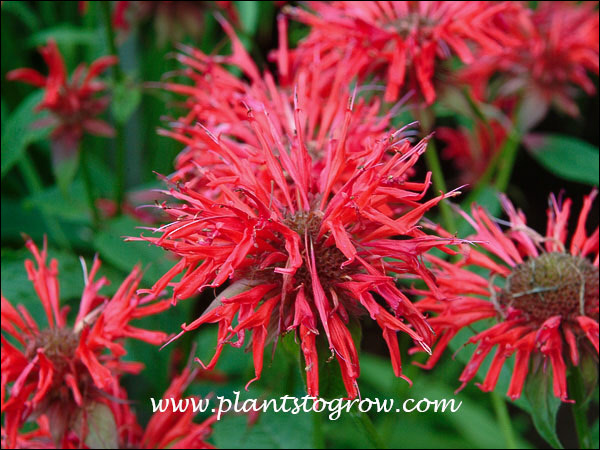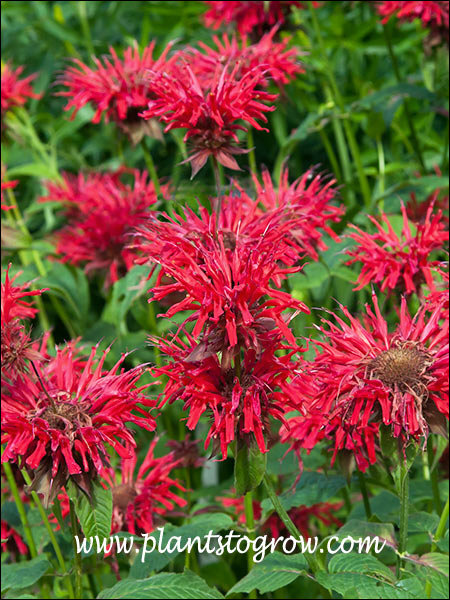| Description | A Monarda with dark red flowers |
|---|---|
| Pronunciation | (mo-NAR-da) |
| Plant Type | All Plants, Perennials Hardy |
| Hardiness Zone | 4-9 |
| Sunlight | full |
| Moisture | average, in moist sites they will expand rapidly becoming aggressive and invasive |
| Soil & Site | average |
| Flowers | flower head consists of tubular flowers in a single or double row whorl around the center, dark red |
| Leaves | opposite, pointed and have a scent |
| Stems | four angled typical of the mint family |
| Roots | fibrous |
| Dimensions | 40 plus inches by equal or greater spread |
| Maintenance | After blooming cut back to the ground. Cutting back eliminates the bare knee stems and the mildew laden leaves. Monarda dies out in the center and needs to be divided every 2-3 years. Dig healthy clumps and replant or dig out center and fill with compost. The plants will rapidly regrow. Should be placed behind a plant that will cover up the space left when Monarda is cut back. All Monarda are prone to get mildew but the newer cultivars are said to be mildew resistant. I doubt if any are totally resistant. |
| Propagation | easy from division, cuttings |
| Misc Facts | This planted is called Oswego Tea because it was discovered by John Betram near Oswego, New York. He used the leaves to make tea. The genus was named after Nicolas Monardes a 16th century botanist. |
| Author's Notes | This is an older cultivar but is still one of the darker reds. |
| Notes & Reference | #4-Herbaceous Perennial Plants (Allan Armitage), #40-Herbaceous Ornamental Plant(Steven Stills), Boerner Botanical Gardens Database |

Cart




